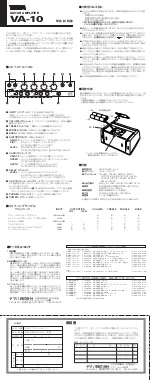
Page 8
“local feedback” are still considered “no feedback”. Anybody disagreeing with this should send
me a diagram of a “true no feedback” circuit, and I will try to point out the hidden feedback.
On the push-pull front, a major improvement was offered by Class A operation, not a new
concept, which delivered significantly better performance by sending a much larger amount of
current idling through the gain devices. This lowered the distortion of the gain devices
dramatically, but at the cost of high heat dissipation. Operating an amplifier in Class A mode
was, and remains, an expensive proposition compared to conventional designs, not
necessarily so much in wasted energy, but in the cost of the heavier hardware needed to
deliver and dissipate the additional heat.
One of the important potential advantages of Class A operation is the possibility for simplified
circuitry requiring little or no feedback because of the much more linear performance of gain
devices biased to a high current. By the mid 1970’s the marketplace began to see high end
solid state amplifiers offering varying degrees of Class A operation in their output devices,
although as far as I can tell, at the time none of them took advantage of Class A operation to
create simpler circuits with less feedback. Mine didn’t, in any case.
Also about this time Matti Ottala introduced the concept of Transient Intermodulation Distortion
(TIM), in which the overuse of feedback, coupled with slow amplifier circuits was identified as
the major culprit in bad sounding amplifiers. It was all the rage for a while, but is no longer
touted with such enthusiasm. The solution to TIM is low amounts of feedback coupled with
fast amplification (high slew rate).
In retrospect, the idea was at least half right, but I believe not completely for the following
reasons: First, it presumed that there was really fast signal in music. Research conducted
independently by Peter Walker and myself showed conclusively that real music contained very
little signal with appreciable slew rate, therefore slew rate limiting on the order proposed by
Ottala was pretty unlikely. Further, all those good sounding tube amplifiers had terrible slew
rate figures.
However, while slew rate limitations of an amplifier might not be the cause of bad sound, it did
correlate to sonic performance in the following manner. It turns out that there are two ways to
make faster amplifiers, the first way being to make the circuit more complex. The second is to
make it simpler. Video amplifiers, which must be very fast, are very simple. Tube circuits tend
to be very simple also.
Rushing to market in the 70’s with their low TIM distortion designs, companies employed either
simpler or more complex circuits to achieve high slew rates. The amplifiers that had simpler
circuits with fewer parts tended to sound better than the amplifiers with complex circuits and a
lot of parts. They also cost less and broke down less often, not an unimportant benefit.
Thus was a great principle of audio amplifier design reborn. Like the principle of Occam’s
razor, if you have two amplifiers with similar performance numbers, the simpler one will sound
better. Often the simpler one will sound better even if its measured distortion is higher.
Looking back on my amplifiers, I see a steady progression of simpler and simpler. Like the
products of other young designers, my first commercial product had everything but the kitchen
sink in it. Now I strive to be like Picasso, who could draw a woman with a single pencil stroke
and create a masterpiece.
Содержание Pass X5
Страница 1: ...Page 1 Pass X5 Owner s Manual ...






























